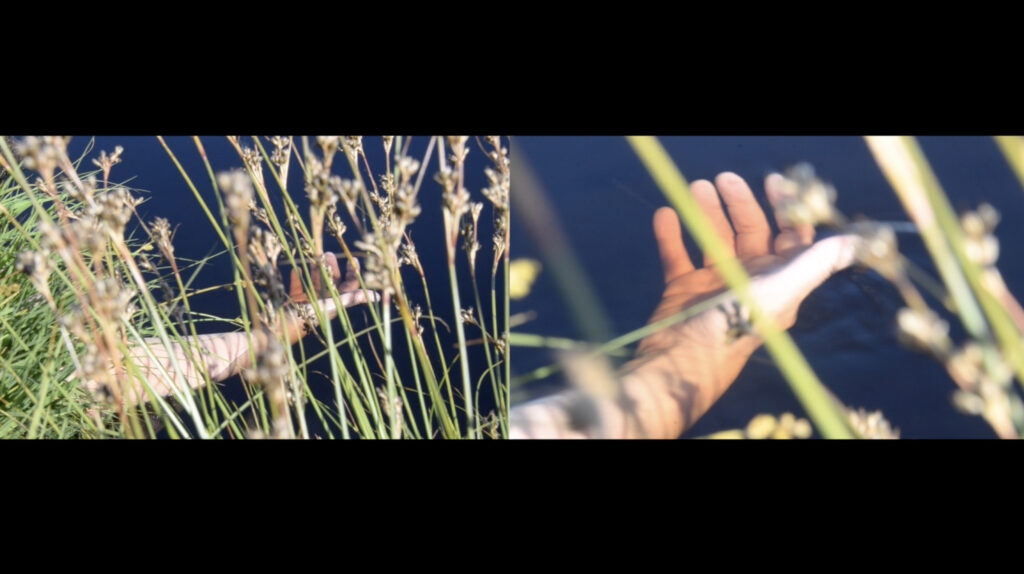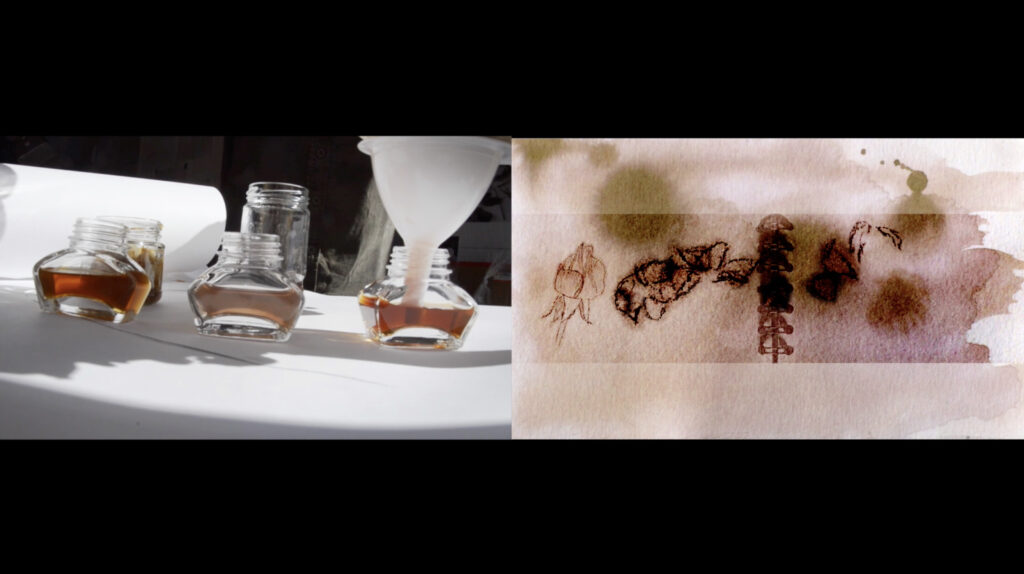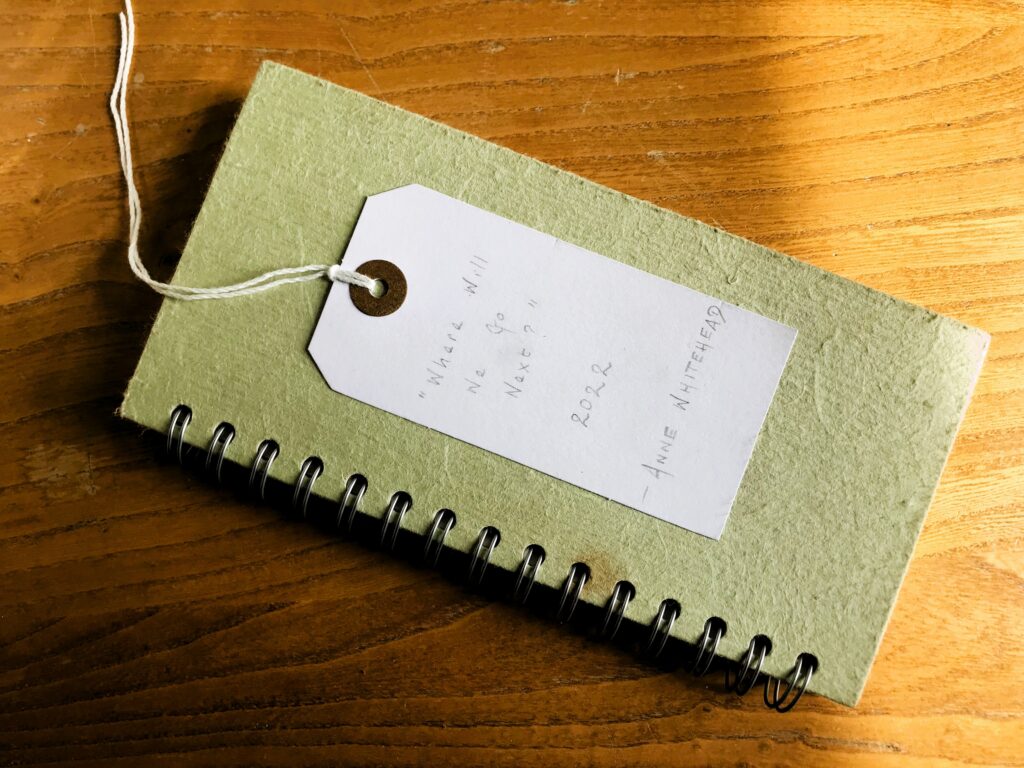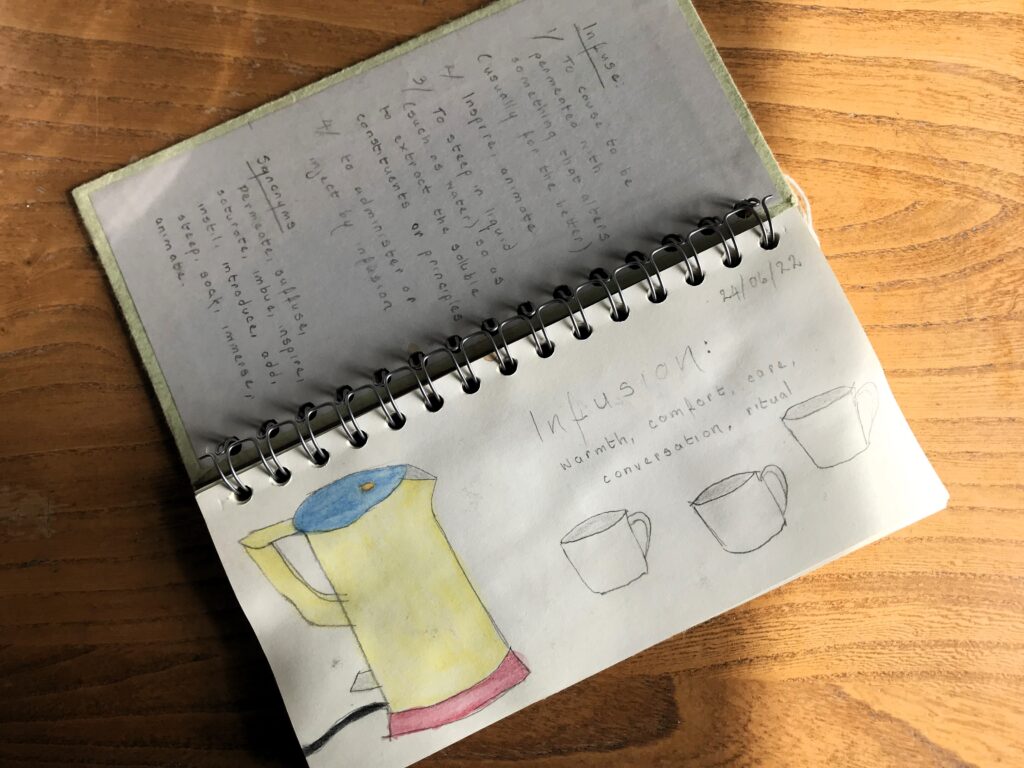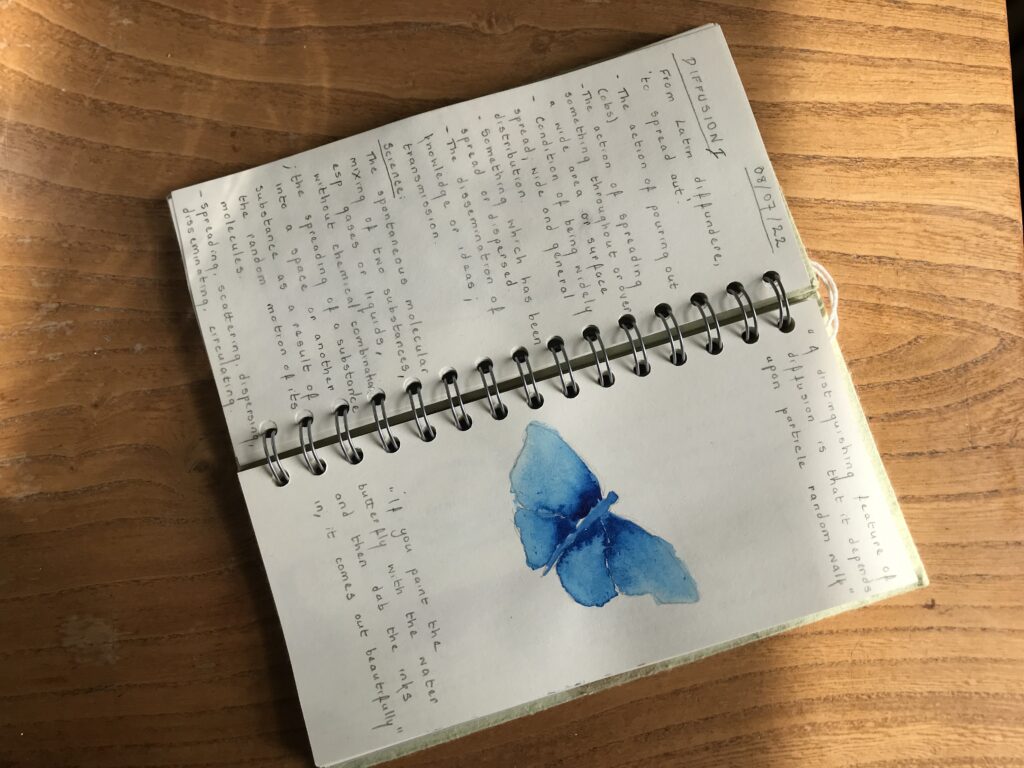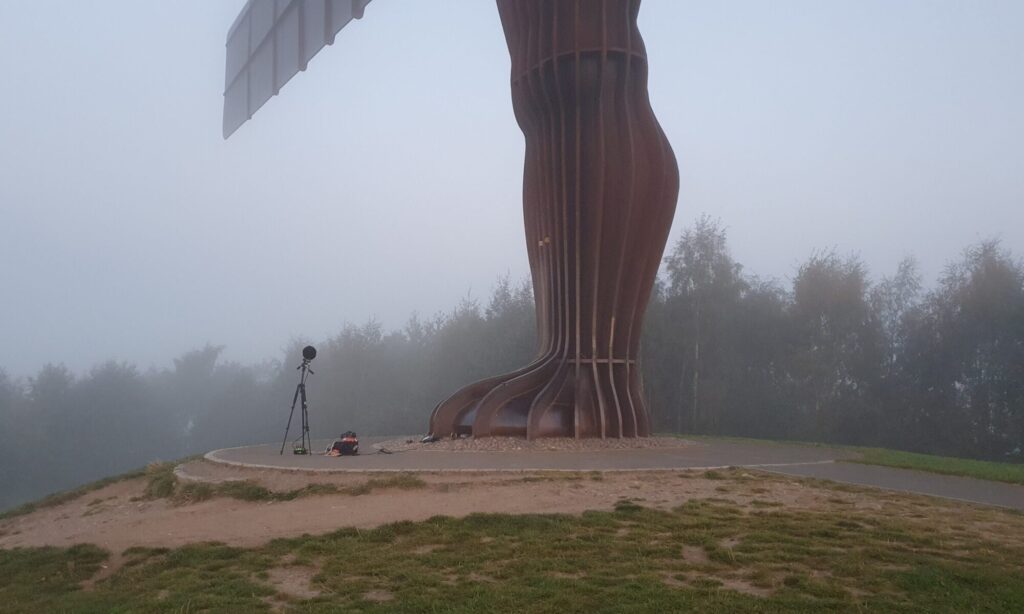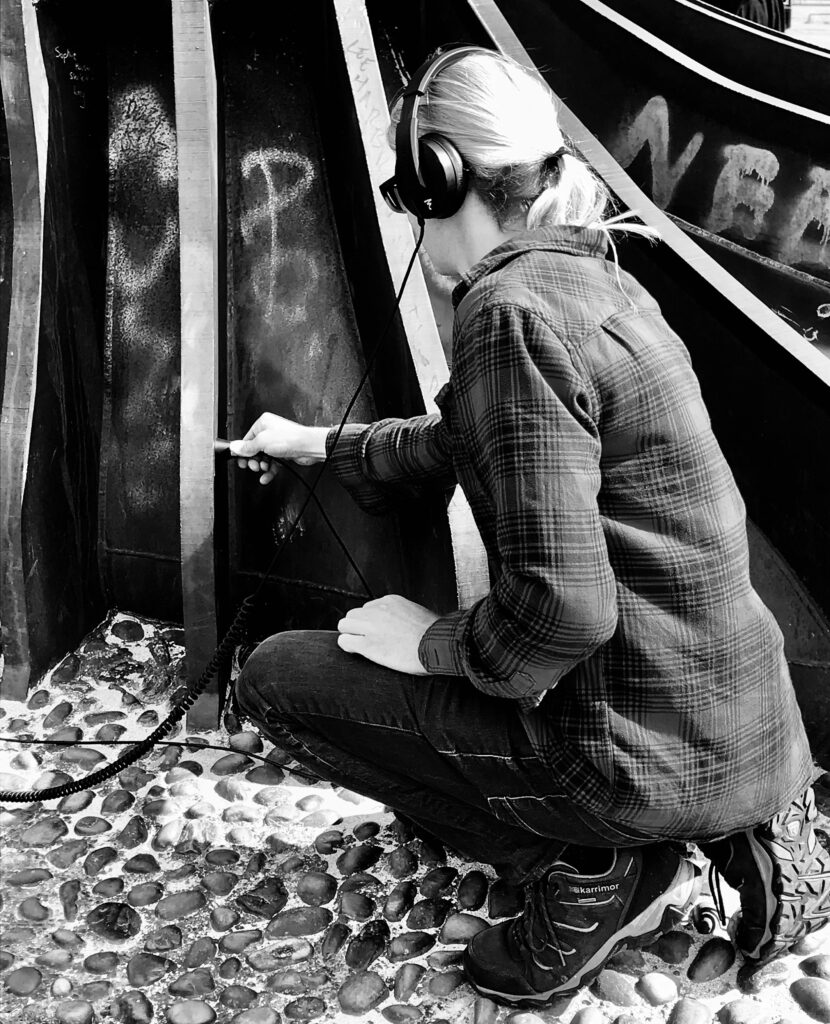
My first visit to The Angel of the North with David took place on a sunny day when the site was busy with families and coach trips. David had brought his audio equipment to test out possibilities for the sound piece and he carried a small recorder, a microphone, and headphones.
Once we reached The Angel, David knocked on each of the welded panels that make up the feet. As we moved round the sculpture, knocking and listening, each panel sounded with a different pitch. We spent some time comparing one panel to another, learning how the sounds varied depending on whether we were at the side of The Angel or were knocking on the heels or toes of the sculpture.
David then put his headphones on and placed the microphone on one of the panels. As he listened to the sounds the microphone picked up, he looked like a doctor with a stethoscope, attending to the internal sounds of the body. He explained that his audio equipment worked in the same way as a stethoscope: the microphone acted as the disc-shaped resonator that is held against the skin and the headphones formed its earpieces.
David invited me to put the headphones on as he held the microphone in place. Putting the headphones over my ears, I heard a low droning hum and was astonished to be able to listen to the ‘voice’ of The Angel as I stood beneath its immense wings. Working slowly round The Angel with the microphone, we heard the same variation in the pitch of the hum that we had picked up with the knocking.
A stethoscope can be used to pick up the sounds made by the heart or the lungs. What noise was David’s microphone enabling us to hear? We could identify vibrations caused by children nearby, who were using The Angel’s toes as a slide. But we weren’t sure if the low drone was the effect of the wind causing The Angel to vibrate or the steady rumble of the motorway traffic as it resonated through the structure. Whatever its source, the sound of The Angel was filled with energy, and it felt like I was listening to the sculpture breathing beside me.
As David made his test recordings, people approached to speak to us, curious about what we were doing. A woman with her children asked what we could hear. David gave the headphones to her daughter, who said that the sound was relaxing, like something you could meditate to. Her son then told us that he would use the sound to compose a piece of music, which he would call ‘The Angel of the North’.
I have always been aware of sound on my visits to The Angel, and in a previous post I described my association of the memorial in the trees with the mingled noise of wind chimes and traffic. Looking back at The Angel from the memorial site, I could hear its lingering hum in my ears, and I knew that, whenever I was there, I would always now listen for that faint echo of The Angel’s breath.

